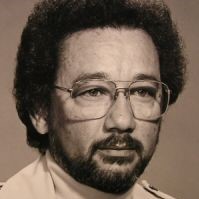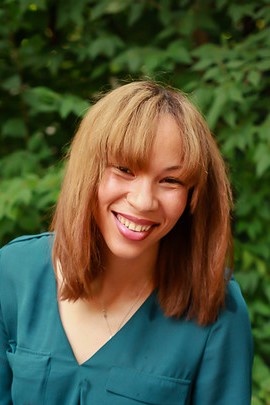As Black History Month comes to a close, it is imperative that we continue to distinguish the contribution of Black people to the weave of the United States. Recognizing the trials and triumphs of Black people cannot and should not end in February. Black History is woven into the very fabric of our country. We have a responsibility to share the stories of Black people as widely and as often as we share other prominent stories of this nation.
Stories are vital; they shape our imaginations and populate our dreams. It is incumbent upon all of us to ensure that every child can see themselves in the story of Marine Science. Here are a few past and present Black marine scientists to include when you share stories of ocean exploration.
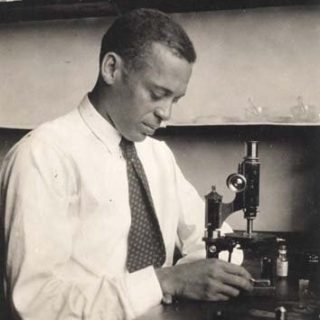 Ernest Everett Just (1883-1941)
Ernest Everett Just (1883-1941)
Ernest Everett Just was a pioneer in the marine and biological sciences. He attended Dartmouth College, where he graduated with honors and received a Ph.D. from the University of Chicago in experimental embryology. He taught and conducted research at Howard University and was also a researcher at the Marine Biological Laboratory in Woods Hole, MA. His research focused on developmental physiology and the effects of radiation on cells. He published several scientific papers as well as two books. Just was also awarded a Julius Rosenwald Fellowship in Biology for 11 years, and he worked abroad in Europe to circumvent racist obstruction to opportunities in the United States. In 1915, Just was the first recipient of the NAACP’s Spingarn Medal.
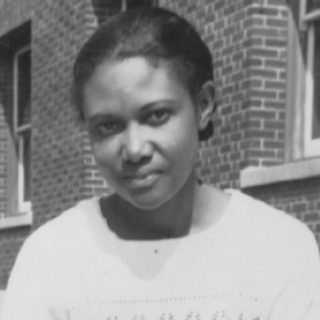 Roger Arliner Young (1899-1964)
Roger Arliner Young (1899-1964)
Young was the first Black woman to earn a Ph.D. in Zoology. She attended Howard University and was taught by E.E. Just, who later hired her on as faculty. She also completed a Master’s degree in Zoology at the University of Chicago and was the first black woman in her field to publish research in the journal Science. She was invited to join the Sigma Xi Scientific Research Honor Society. Young then completed her Ph.D. at the University of Pennsylvania (while teaching and acting as head of Howard’s zoology department). She was a dedicated scientist and civil rights activist.
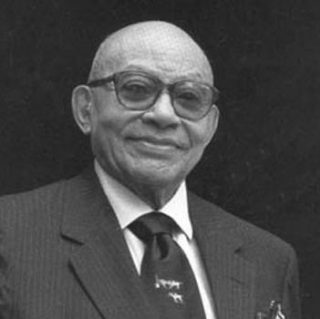 Samuel Milton Nabrit (1905-2003)
Samuel Milton Nabrit (1905-2003)
A Morehouse College graduate, Samuel Nabrit was the first African-American to earn a Ph.D. at Brown University. He was also the first Black Trustee at Brown and the first Black American scientist to be appointed to the Atomic Energy Commission. Nabrit’s research focused on the regeneration of tail fins in injured fish at the Marine Biological Laboratory in Woods Hole, MA. Many of the papers he wrote are still currently relevant and regularly cited. He went on to become a professor at Morehouse College, president of the National Institute of Science, dean of the graduate school of arts and sciences at Atlanta University, a founding member of the Institute of Medicine, and founder of the Southern Fellowship Fund (which supported Black students pursuing doctoral degrees), among many other accolades.
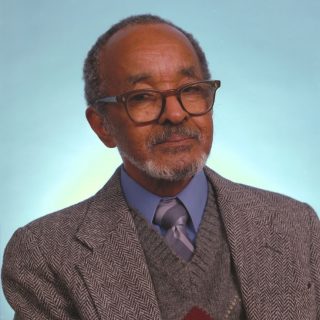 Emmett W. Chapelle (1925-2019)
Emmett W. Chapelle (1925-2019)
Emmett Chapelle was a prolific scientist, holding 14 patents and advancing biomedical science, astrobiology, remote sensing, and genetics. He was the first person to identify the chemical composition of bioluminescence, discovered how to measure this property to determine bacterial abundance, and pioneered the use of satellites to measure luminescence. Much of his work is still widely used today. Chapelle was awarded NASA’s Exceptional Scientific Achievement Medal in 1994 and, in 2007, was inducted into the National Inventors Hall of Fame. He was a member of the American Chemical Society, American Society of Black Chemists, American Society of Biochemistry and Molecular Biology, American Society of Microbiology, and American Society of Photobiology.
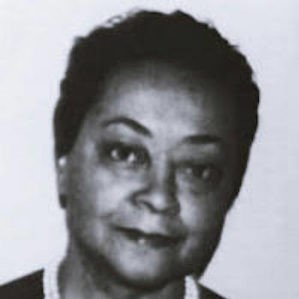 Joan Murrell Owens (1933-2011)
Joan Murrell Owens (1933-2011)
Owens was a dedicated scientist, earning her bachelor’s degree from Fisk University, then returning to school at age 37 to earn her master’s and doctoral degrees from George Washington University in Geology. Her research passion was corals, but as she carried the gene for sickle cell anemia, she could not scuba dive to study them. She instead used the coral collections at the Smithsonian Institution to complete her research. Owens described a genus of corals, Rhombopsammia, and classified several species of deep-sea corals such as Letepsammia. Her button coral research was extraordinarily successful and informative. She later became an associate professor at Howard University.
Robert Kent Trench
Robert Kent Trench was educated at the University of the West Indies, Oxford University, and the University of California at Los Angeles. He received his Ph.D. from UCLA in invertebrate zoology and taught for four years at Yale University and then at the University of California at Santa Barbara. He authored several scientific papers and was considered the world’s leading expert on corals and zooxanthellae. He was awarded the Miescher-Ishida Prize for his description of metabolite flux from kleptochloroplasts to hosts. Trench is a member of the American Association for the Advancement of Science and the Society of Limnology and Oceanography and currently retired. He serves as an advisor for the Global Coral Reef Alliance.
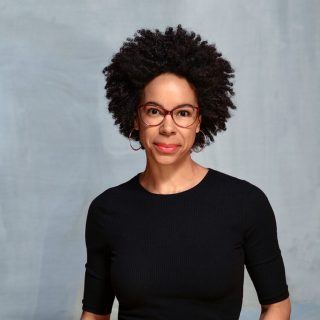 Ayana Elizabeth Johnson
Ayana Elizabeth Johnson
Ayana Elizabeth Johnson is a dynamic scientist, writer, and policy expert. She received a bachelor’s degree from Harvard University in Environmental Science and Public Policy and a Ph.D. from Scripps Institution of Oceanography in Marine Biology. Her research focused on the ecology, socioeconomic, and policy of sustainable coral reef management. She also created a bycatch-reducing fish trap that won the first Rare/National Geographic Solution Search. Johnson has held policy positions at NOAA and the EPA and served as the executive director for the Waitt Institute, where she co-founded the Blue Halo Initiative. She also spent three years as an adjunct professor of Urban Ocean Conservation at New York University. She recently co-edited the anthology, All We Can Save, with Dr. Katherine Wilkinson and is the cohost and cocreator of the Spotify/Gimlet podcast, How to Save a Planet.
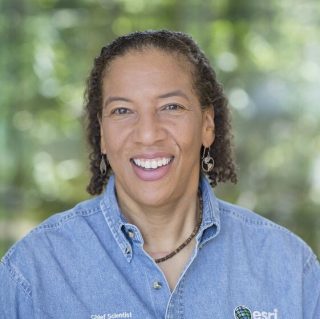 Dawn Wright
Dawn Wright
Dawn Wright, the Chief Scientist at Esri, started her journey at Wheaton College, where she earned a bachelor’s degree in geology. She then earned a master’s degree in oceanography from Texas A & M University and a Ph.D. in physical geography and marine geology from the University of California at Santa Barbara. Wright conducted postdoctoral research at NOAA and spent 17 years teaching at Oregon State University, where she built the GIS program. As Chief Scientist at Esri, she maps the ocean floor for use in planning and management, most recently in the National Marine Sanctuary of American Samoa. Dawn has also contributed to the ocean basemap on the Esri platform and is committed to promoting diversity in the GIS world.
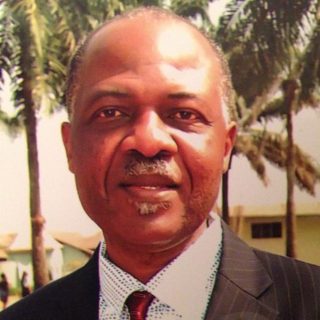 Paulinus Chigbu
Paulinus Chigbu
Paulinus Chigbu is currently the Associate Dean for Research, Development, and Graduate Education and a Professor of Marine Environmental (Fisheries) Science at the University of Maryland Eastern Shore. He received bachelor’s and master’s degrees in zoology from the University of Benin in Nigeria and a Ph.D. in fisheries from the University of Washington School of Fisheries. His research interests include fish and zooplankton ecology, crustacean biology, and marine and freshwater trophic dynamics. Chigbu has published several papers. He is currently the Director of the NOAA-LMRCSC program. He has received several awards for his service and mentorship, including the United States Presidential Award for Excellence in Science, Mathematics, and Engineering Mentoring.
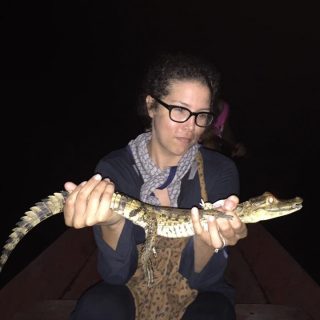 Nikki Traylor-Knowles
Nikki Traylor-Knowles
Nikki Traylor-Knowles is a successful researcher and professor at the University of Miami Rosensteil School of Marine Sciences. Her research focus is on the cellular mechanisms of immunity in corals. Traylor-Knowles was initially interested in sharks and received her bachelor’s and master’s degrees from Johns Hopkins University in cellular and molecular biology. An opportunity to study corals lead her to her current research passion: invertebrates. She earned her Ph.D. from Boston University in biology and was a postdoctoral researcher at Stanford University. She has collaborated on two books and published numerous research papers. She has received several awards and fellowships, including the National Science Foundation‘s Ocean Sciences Postdoctoral Research Fellowship.
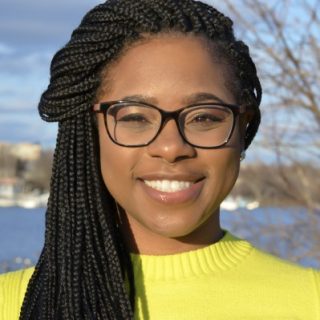 Jeanette Davis
Jeanette Davis
Affectionately known as Dr. Ocean, Jeanette Davis is a scientist, author, and advocate. She received her bachelor’s degree in marine and environmental science from Hampton University and her Ph.D. in marine microbiology from the University of Maryland. Her research focused on marine drug discovery, and she recently helped discover a marine bacterium that helps to fight cancer. She is a passionate mentor and community advocate and founded the Marquis Pressey Scholarship for Black students in her hometown of Wilmington, DE. She is also an adjunct professor at Hampton University and was a collaborator on a White House publication addressing essential ocean research and technology for the next decade. One of her notable projects is a children’s book titled “Science is Everywhere.”
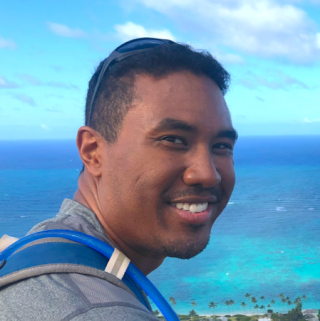 Richard Coleman
Richard Coleman
Richard is a Ford Foundation Postdoctoral Fellow at the University of Central Florida. His current research focuses on determining the biological traits that are predictive of dispersal potential in marine fishes. After having worked in the financial sector for seven years, Richard pursued a career in marine science. He attended San Francisco State University, majoring in Marine Biology and Limnology. He went on to earn his Ph.D. in Zoology, with a specialization in Ecology, Evolution, and Conservation Biology, and studied the evolutionary and connectivity patterns of reef fishes across different spatial scales.
Our history books should be as colorful and inclusive as the American ideal we aspire to. These stories should not be one-offs that we break out once a year for discussion. As a Black girl that grew up in a Black country and attended an HBCU, I have had the privilege of seeing myself represented in every aspect of life and success. Nothing was ever off-limits to me. As was so eloquently stated by Leonard Pace, “Children should not feel that there are doors closed to their dreams.” By existing in these spaces and ensuring names like Ernest Just and Roger Arliner Young are as synonymous with ocean sciences as those of Eugenie Clark and Elton Sette, we expand the limits of what is possible for every child. That is our responsibility.
